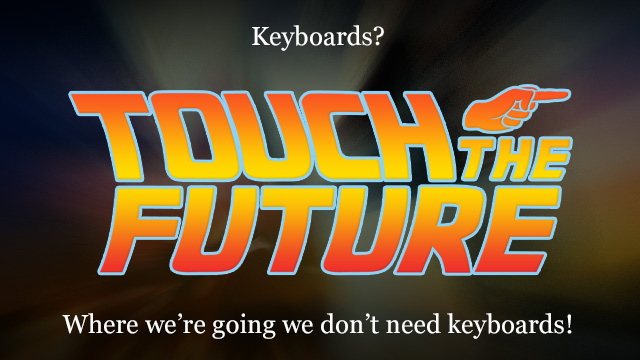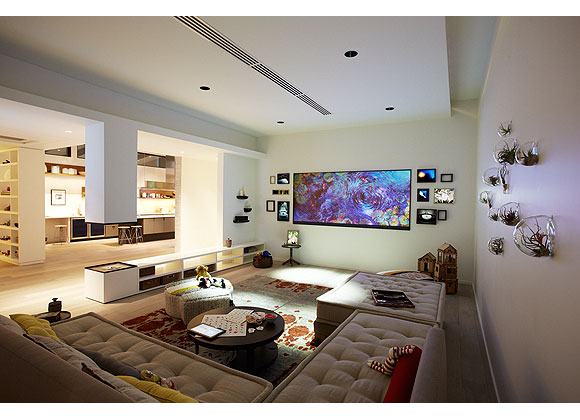
Understatement of the century: touchscreen technology evolved at a rapid pace in the past decade. In the days of Y2K, Palm Pilots were a big deal. Five years ago? The iPhone debuted and the corresponding touchscreen explosion hasn't slowed up since. Today we're at a point where we think we understand how all the innovations in touch technology can fit into our future. But based on these last few years, good luck. Did anyone see the tablet-craze coming?
The locomotive of technological innovation has yet to be derailed, but it’s come to a point where we must find particular uses and integrations for all of these advancements. Looking at how companies like Microsoft and Samsung are approaching the future of touchscreen technology may be the surest clues we can get. Talking with visionaries like Bill Buxton, one of the pioneers of touchscreen technology who now works as one of the principle researchers Microsoft Research, doesn't hurt either. It may be impossible to accurately gauge the future of touch, but that won't stop Ars from trying.
Envisioning the future

From touch-enabled Ultrabooks to smartphones and tablets, consumers expect most gadgets to natively feature touch interaction. This precise buy-in has led companies like Microsoft to create live dioramas centered on the concept.
Located at its Redmond, WA campus, Microsoft’s Envisioning Center illustrates how the company imagines touch technology evolving to make the future “easier and more enjoyable.” The facility shows how technology is implemented and used in varying scenarios—at home, at work, and everywhere in between. It includes products that are currently in development by Microsoft in addition to other technology trends that have recently emerged. “We don’t imagine that we’re predicting the future,” said Anton Andrews, director of Envisioning in Office Labs, in an official press release. “But it’s a case of staying on the cutting edge of the conversation and promoting that conversation.”
The above concept room is focused on natural interactions with technology based on voice, gesture, and touch. It features a 130-inch, rear-projected 4K television with built-in Kinect and an ambient lighting system. “I like to think of it as a concept car that allows us to share what it might be like to experience future technologies with visitors, get their feedback, tweak, remix, and discuss,” wrote Steve Clayton, editor of the company’s Next at Microsoft blog. The video introducing the Envisioning Center shows a Microsoft Surface tablet interacting with a giant touchscreen board, as well as the company’s SmartGlass software being put to use in the living room. There’s even a scene where one of the family members holds up a piece of food to the touch-enabled kitchen wall and asks it to help him come up with a recipe.
Much of what's featured in the diorama is just a glimpse of what's possible in the next five to ten years. With 4K televisions making headlines at this year’s CES and rumors circulating around the next-generation Xbox console, it’s not far-fetched to assume this is where touchscreens are headed.

It also seems like appliances are headed in a touchscreen direction. While they’ll still serve the same purpose as before—you know, keeping food fresh or washing a bulk load of fabric—companies like Samsung and LG started integrating touchscreen displays into these appliances so they can interact with a smartphone or tablet. This “smart home” technology now includes the ability to use near-field communication (NFC). Simply wave a smartphone in the air and it integrates with an appliance to perform an action. According to LG North American President and CEO Wayne Park, this allows consumers to engage with their appliances in a way that’s natural, automatic, and intuitive.
This video, produced about three years ago by Swedish company The Astonishing Tribe for its Open Innovation experiment (the company was later acquired by BlackBerry), offers an introspective glimpse at how capacitive touch technology will be used in a person’s day-to-day life. It’s interesting to see the similarities between this video and the one that Microsoft produced. Both depict consumers who pay no mind to the touchscreens laid out in front of them because the technology is so ingrained in their lives. It also illustrates the fact that companies are no longer worried about getting touchscreens into the hands of consumers. Rather, they care about where touchscreens can be useful inside the consumer's home.
reader comments
73